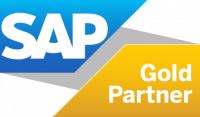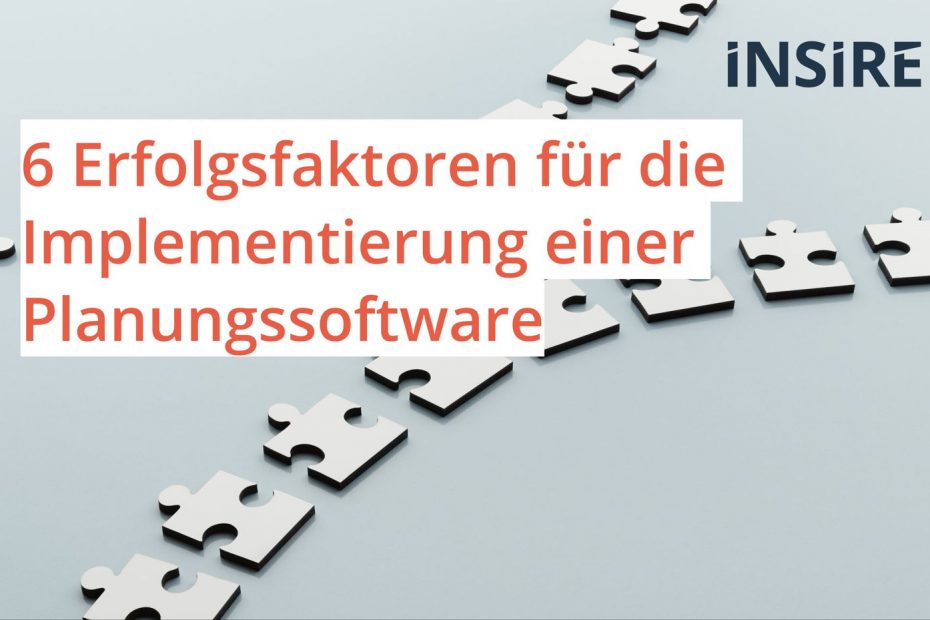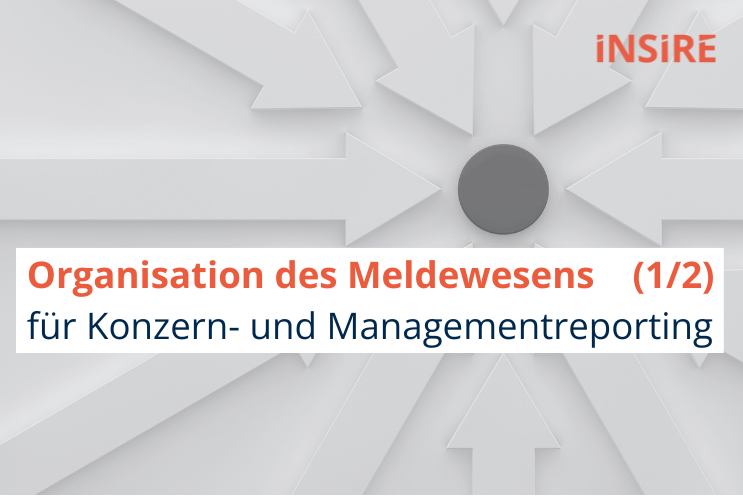Achieve your business goals, build on insights and minimize risk - with a powerful financial planning software you improve your financial planning in the long term. However, implementing such software is a challenging matter.
Here we present the various aspects of such financial planning software, explain the most important advantages and describe six success factors.
What is financial planning software?
Financial planning software is a specialized tool that helps you as a company to efficiently manage your financial resources and processes. In this way, you support growth and profitability. The software makes it possible to manage various financial aspects such as budgeting, forecasting, analysis and reporting in one centralized system. Its use can help to automate, optimize and flexibly design the financial planning and controlling processes.
Benefits of Financial Planning Software
Introducing financial planning software offers you numerous advantages. These include:
- Increase in efficiency: By automating financial processes, you save time and resources that would otherwise be spent on manual tasks such as data entry and validation.
- Improved Accuracy: Financial planning software reduces the likelihood of errors and inaccuracies that can occur with manual processes.
- Better Decision Making: By providing real-time data and analytics, you are empowered to make informed decisions and adjust your business strategies accordingly.
- Integrated planning: Financial planning software allows you to manage and analyze all relevant aspects such as income statement, balance sheet and liquidity in a single platform.
- Graphic representation of data: You can understand your information better thanks to the visualization of your financial data in the form of charts and graphs, for example with the help of SAP Analytics Cloud. In addition, the data can be better interpreted.
- Adaptability: Customize the financial planning software to your specific needs and processes to ensure optimal performance and effectiveness.
6 Success Factors for Implementing Financial Planning Software
Implementing financial planning software improves your financial processes and helps in decision making. To ensure the success of such an implementation, the following six success factors must be considered:
One of the most difficult things to do when implementing financial planning software is clear descriptions and requirements.
It is important to have a thorough understanding of your specific business processes and responsibilities within your business organization. Based on these values, you can define target processes for your planning and derive specific requirements for the software implementation. This is how you map local specifics of the organization.
This is a crucial aspect for the success of the project. The business processes are often not described in sufficient detail, so that no clear instructions for software development can be derived from them. This creates misunderstandings and the controller does not find himself in the implemented software, which impairs acceptance.
If you want to implement financial planning software, one of the first steps is to determine the appropriate planning approach. You should be clear about what you want to achieve and how you want to pursue those goals. You have the option of taking a bottom-up approach or planning top-down:
Bottom-up planning: Bottom-up approaches often have the disadvantage that several people are involved in the process. This increases the coordination effort and makes it more time-consuming. You also run the risk of creating false incentives, for example by adding unnecessary buffers to create more security. Also, since the numbers often don't match management's expectations, you still have to make adjustments at the end of the process with a bottom-up implementation.
Top down planning: Top-down financial planning is leaner and can be better integrated into long-term strategic planning. The goals of the management are included in the planning at an early stage and more efficiently. Clear specifications from the management are a must for financial planning, at least in the form of central framework parameters such as sales or profit. The comparison of planned figures with forecasts is also faster and more efficient.
With both approaches, budgeting is usually carried out over a period of twelve months. The time horizon for a (rolling) forecast is based on the business model. The crucial question: Which plan figures are relevant over which period? It helps to look at and evaluate the planning success of the past. For example, it does not make sense to create a 24-month forecast in fast-moving industries such as transport and logistics or IT.
Another important aspect of successfully implementing financial planning software is the level of detail in your planning. Two questions are crucial:
- What information and dates would you like to plan?
- What information and data do you need for reporting?
- The level of detail is determined by the assignment of the relevant characteristics such as accounts, cost centers and profit centers. Depending on the level of detail, financial planning becomes more or less complex.
In a top-down approach, planning is performed in less detail and in a more aggregated way, for example, at business unit level instead of profit center level, or at total item level instead of account level.
Bottom-up approaches tend to carry too much information that adds no value and ultimately cannot be interpreted by management.
It is therefore important to carefully weigh up the costs and benefits of financial planning. The more precise specifications you make about value drivers and control mechanisms, the easier it is to implement software. The clear definition of the value drivers and control mechanisms represents a central aspect of every planning project: What should be planned, for what and for whom?
In addition, think about what requirements management and external interest groups such as banks and investors actually have. Ultimately, you only query information in the financial planning software that contributes to data-driven decision-making.
In order to successfully integrate your financial planning software into your company, you ideally work closely with your employees. Involve your employees and explain the benefits of the project to them. If this does not happen, projects are often doomed to fail.
Especially in planning projects in which historically large data collections exist, it is sometimes difficult for those involved to see the planned figures as part of an overall concept. Here you should show the advantages of the software, for example that errors can be reduced and efficiency increased.
Quick results are usually the best. Especially when the employees find themselves in them. It is important to educate and train the people involved in the new solution, ideally using data that is already known. With small successes, you can do persuasion work directly on the system, which increases willingness and motivation.
The implementation of the software also requires close cooperation between the business department and IT: New IT processes are created that you have to describe, coordinate with the business department and integrate into day-to-day cooperation.
Thanks to modern financial planning software, you use more and more data that you process faster. However, many companies do not have the ideal environment to implement this. An IT infrastructure that is as homogeneous as possible facilitates data flow, analysis and reporting.
Of course, interfaces are possible in the various systems. However, you must take good care of them and maintain them. Heterogeneous IT landscapes with different software solutions (e.g. between data warehouse and planning tools) complicate and slow down your financial planning. Even simple tasks such as creating or changing master data become a tedious undertaking.
The result: incompatible data structures, high redundancies and costs.
Instead of long concepts and endless meetings, you strive for an agile approach when implementing financial planning software. Ideally, you establish topic-dependent sprints in which you directly plan the practical work with the software.
The chosen method should offer flexibility to act individually if necessary and to be able to insert meaningful elements. In certain areas such as data modeling, it can be valuable to first create a detailed concept before implementing it in the software.
When designing, it is good practice to consider a parallel approach. Here you not only take on the requirements from the business, but transfer them directly into the technical concept. This allows you to deal with the circumstances of the later implementation at an early stage. In this way, you can technically clarify particularly overarching topics such as currency conversion and version management right from the start.
What distinguishes SAP from classic financial planning software?
When it comes to enterprise-level financial planning software, SAP stands out from traditional financial planning software.
The main difference between SAP and classic financial planning software is that SAP is an integrated system that provides end-to-end financial planning capabilities. The SAP software suite also offers a wide range of functions with which you can cover all aspects of your financial planning:
Another factor that sets SAP apart from classic financial planning software: SAP integrates seamlessly with other ERP systems, such as customer relationship management (CRM) or supply chain management (SCM) systems. There is also the option of connecting to the SAP solutions for financial consolidation in order to also be able to consolidate plan data. Consequently, SAP offers a complete overview of the financial performance of your company. This integration facilitates real-time data exchange, enabling decision-makers to act on the basis of accurate and up-to-date information.
Implementing Financial Planning Software Summary
A powerful financial planning software supports companies in optimizing their financial planning and controlling processes. In order to achieve the best possible results, companies should consider the six success factors mentioned above and carefully analyze their specific requirements and goals. A successful implementation of financial planning software leads to more efficient and effective financial planning and promotes business success.
Are you interested in advice on financial planning and implementation of the right software? Contact us! We would be happy to advise you.





